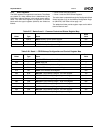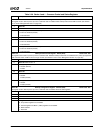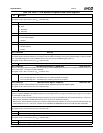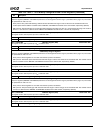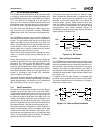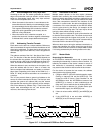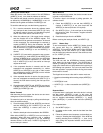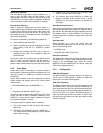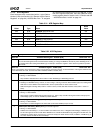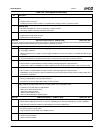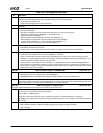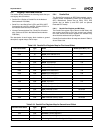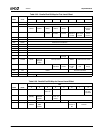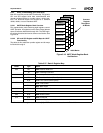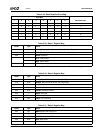
AMD Geode™ SC3200 Processor Data Book 123
SuperI/O Module
32581C
Master Error Detection
The ACB detects illegal Start or Stop Conditions (i.e., a
Start or Stop Condition within the data transfer, or the
acknowledge cycle) and a conflict on the data lines of the
ACCESS.bus. If an illegal condition is detected, ACBST[5]
is set, and master mode is exited (ACBST[1] is cleared).
Bus Idle Error Recovery
When a request to become the active bus master or a
restart operation fails, ACBST[5] is set to indicate the error.
In some cases, both the device and the other device may
identify the failure and leave the bus idle. In this case, the
start sequence may be incomplete and the ACCESS.bus
may remain deadlocked.
To recover from deadlock, use the following sequence:
1) Clear ACBST[5] and ACBCST[1].
2) Wait for a timeout period to check that there is no other
active master on the bus (i.e., ACBCST[1] remains
cleared).
3) Disable, and re-enable the ACB to put it in the non-
addressed slave mode. This completely resets the
functional block.
At this point, some of the slaves may not identify the bus
error. To recover, the ACB becomes the bus master: it
asserts a Start Condition, sends an address byte, then
asserts a Stop Condition which synchronizes all the slaves.
5.7.8 Slave Mode
A slave device waits in idle mode for a master to initiate a
bus transaction. Whenever the ACB is enabled and it is not
acting as a master (i.e., ACBST[1] is cleared), it acts as a
slave device.
Once a Start Condition on the bus is detected, the device
checks whether the address sent by the current master
matches either:
• The ACBADDR[6:0] value if ACBADDR[7] = 1.
or
• The general call address if ACBCTL1[5] 1.
This match is checked even when ACBST[1] is set. If a bus
conflict (on ABD or ABC) is detected, ACBST[5] is set,
ACBST[1] is cleared and the device continues to search
the received message for a match.
If an address match or a global match is detected:
1) The device asserts its ABD pin during the acknowl-
edge cycle.
2) ACBCST[2] and ACBST[2] are set. If ACBST[0] = 1
(i.e., slave transmit mode) ACBST[6] is set to indicate
that the buffer is empty.
3) If ACBCTL1[2] is set, an interrupt is generated if both
ACBCTL1[2] and ACBCTL16 are set.
4) The software then reads ACBST[0] to identify the
direction requested by the master device. It clears
ACBST[2] so future byte transfers are identified as
data bytes.
Slave Receive and Transmit
Slave receive and transmit are performed after a match is
detected and the data transfer direction is identified. After a
byte transfer, the ACB extends the acknowledge clock until
the software reads or writes ACBSDA. The receive and
transmit sequences are identical to those used in the mas-
ter routine.
Slave Bus Stall
When operating as a slave, the device stalls the
ACCESS.bus by extending the first clock cycle of a trans-
action in the following cases:
• ACBST[6] is set.
• ACBST[2] and ACBCTL1[6] are set.
Slave Error Detection
The ACB detects illegal Start and Stop Conditions on the
ACCESS.bus (i.e., a Start or Stop Condition within the data
transfer or the acknowledge cycle). When this occurs,
ACBST[5] is set and ACBCST[3:2] are cleared, setting the
ACB as an unaddressed slave.
5.7.9 Configuration
ABD and ABC Signals
The ABD and ABC are open-drain signals. The device per-
mits the user to define whether to enable or disable the
internal pull-up of each of these signals.
ACB Clock Frequency
The ACB permits the user to set the clock frequency for the
ACCESS.bus clock. The clock is set by the ACBCTL2[7:1],
which determines the ABC clock period used by the device.
This clock low period may be extended by stall periods initi-
ated by the ACB or by another ACCESS.bus device. In
case of a conflict with another bus master, a shorter clock
high period may be forced by the other bus master until the
conflict is resolved.



